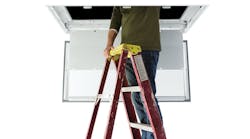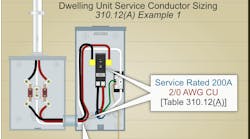For decades now, the push has been to move maintenance from merely reacting to failures and toward proactively preventing them. If the proactive mode is too strictly adhered to, pressure will be exerted on maintenance to be more responsive and that pressure will greatly overshoot the target. Then the whole “we need to get out of reaction mode” thing starts all over again.
When maintenance is in the reactive mode, costs are high, reliability is low, and strategy is absent. Further, the stress of continually putting out fires makes for low job satisfaction and often has a negative effect on team performance.
Production managers may agree that something must be done and agree to give you some leeway in trading current downtime for future reliability. That is, they’ll tolerate some loss in production volume now if they feel assured they can get a much bigger increase in production volume later.
But notice how vague these value terms are. What is “some loss”? And by “later,” do they mean next week? Suppose they are thinking, for example, that an extra half hour of downtime on Machine X to perform PM work on Machine Y will give them an extra hour of uptime on Machine Y this month. However, if a tech is dispatched to Machine X only after she finishes the two hours of PM required for Machine Y, then they may see maintenance as unresponsive.
If you try to play with the numbers to avoid this, you run into a situation where two hours of downtime on one machine is annoying but, on another machine, an extra 20 minutes of downtime brings on the cold sweats.
Most critical lines
There is a way to prevent this predicament. First, find out from the production people which production machines are the most critical in terms of total runtime needed. In determining this, they will usually consider the potential sales (e.g., if it runs 24/7, can we sell all we make?), the potential total revenue, the existing sales commitments (we can’t lose those customers), and the existing total revenue. Whatever the method and considerations, it’s their call to make. You want them to make the call because it is their perception that matters.
They may rank the top 10 machines/lines in order of importance, or in some other way let you know where to put your focus when things go sideways. Try to get them to provide you with a shortlist to start with. On these machines, you will try to keep repair response to the absolute minimum while also dedicating resources to ensuring those machines get the PM they need.
This is the time to ask for automated monitoring if it’s not already installed. For example, rather than schedule a tech to take vibration readings every week, you install wireless vibration sensors and a vibration monitor that can send an alarm via a smartphone app.
This is also the time to ask for PdM test equipment or services. Infrared thermography, for example, can be used by a properly trained thermographer to identify specific anomalies (e.g., potentially bad connections, overheated circuit breakers, or hot motor bearings) in addition to simply spotting problems that normally don’t get detected prior to a failure (e.g., a hot spot on a fuse clip). If one of the critical production lines depends on plant air, bringing in a firm to identify, tag, and repair system leaks will improve equipment performance, reduce energy bills, and reduce stress on the air compressors.
Once you have these improvements in place, there will be fewer instances of downtime overall. Your existing resources can cover more downtime calls and more preventive maintenance to reduce those downtime calls in the first place.
Something else happens with this approach. In the past, you may have asked for $3,000 of new test equipment or $7,500 for specific services with the vague promise of reducing downtime. But with this approach, the decision-makers can already see specific improvements in specific metrics, and those are monetized.
So Bob in accounting back at corporate HQ sees an $800,000 revenue improvement over the previous month and all you are asking for is another $7,500 to get more improvement? He does not even have to perform a cash flow analysis or calculate the internal rate of return. He already has historical proof of an excellent return on investment when the investment is requested by the maintenance department.




